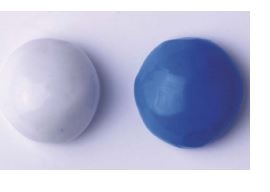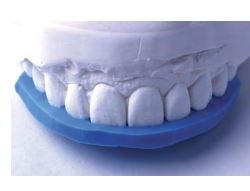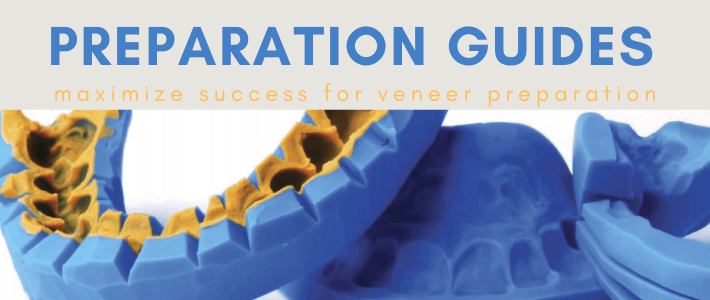By Zachary Sisler, DDS
Preparing anterior teeth for esthetic restorations can be a daunting task for any clinician. In order for the dental laboratory technician to create an ideal restoration, the dentist must be able to prepare and contour a tooth to ensure adequate reduction has been allotted. The use of preparation guides can increase the efficiency and efficacy of the preparation appointment by ensuring the process is predictable and accurate. It is important to remember that in order to achieve exceptional esthetic results, the dentist must begin with the end in mind. By beginning to visualize the end result during the treatment-planning phase, he or she can establish a diagnostic wax-up to act as a blueprint for the patientís functional esthetic matrix.
 Initial Depth Cut Preparation Guide
Initial Depth Cut Preparation Guide
Take equal amounts of the catalyst and base, knead them together to ensure a homogenous mix, roll it into a cylinder, and press the cylinder down over the occlusal surfaces of the wax-up while also pressing the putty against the facial and lingual surfaces to ensure adequate adaptation. After the putty sets, remove it and reline the guide with an ultralight PVS wash, then readapt it to the wax-up to obtain an even higher level of detail. After the PVS is set, remove the guide and cut v-shaped notches in the embrasure areas to act as vents out of which excess bis-acryl material can flow.
Incisal Edge Preparation Guide
The second guide to be fabricated is the incisal edge matrix, which is created from putty as well. It is made by taking equal amounts of the catalyst and base putty, rolling them into a sphere, then adapting it against the palate and molding it over the incisal edges of the wax-up.
†
"The dentist must begin with the end in mind."
†
 Facial Preparation Guide
Facial Preparation Guide
In creating the three-plane facial reduction matrix, equal amounts of catalyst and base putty are mixed and rolled into a cylinder, then adapted over the facial surfaces of the wax-up. This is followed by crossing over the occlusal surfaces of the molars and connecting the ends of the cylinder on the palate, making it one contiguous matrix.†The palate and the molars act as positive seats for the guide to rest. After the putty sets, the matrix is carefully sliced horizontally into the three facial planes followed by one vertical releasing incision on one side only.†This allows each section to be peeled back to check the preparation while the guide is placed in the mouth.
A preparation guide is a visualization tool for dentists preparing anterior teeth for esthetic restorations. The process of designing a preparation based on the proposed end result can alleviate stress by allowing the dentist to ensure adequate reduction is provided to avoid issues during the laboratory fabrication of definitive restorations.










